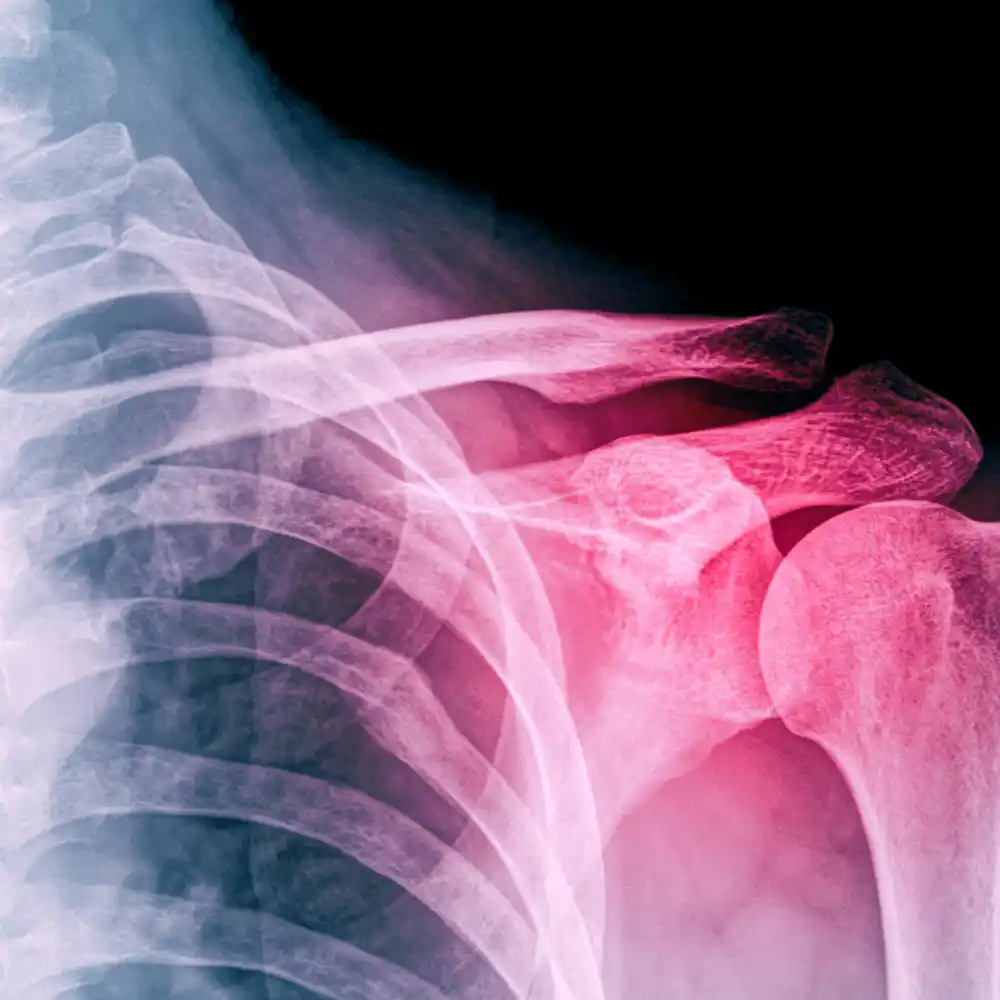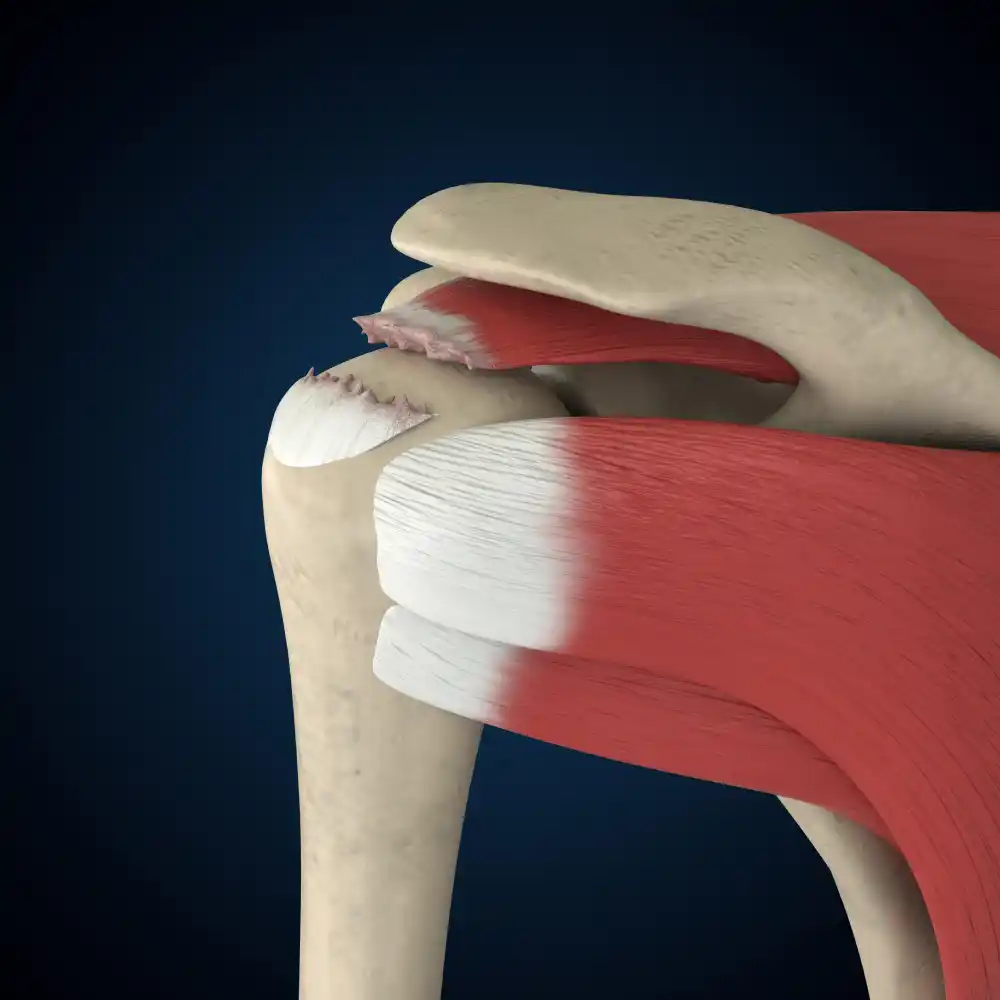Whoever you are -- professional athlete, an office professional, an industrial worker, etc -- your shoulders are capable of incredible movement, allowing you to throw, lift, swing, and perform all manner of tasks with your arms. However, that range of motion requires a complex series of tissues, all of which are vulnerable to injury.
Dr Vonda Wright, MD, MS, FAOA is a double-board certified orthopedic shoulder surgeon and rotator cuff specialist who is highly experienced in treating injuries of the shoulder, using non-surgical treatments and minimally-invasive procedures such as SAD shoulder surgery and arthroscopy. Her comprehensive approach to musculoskeletal wellness harnesses innovative surgical and orthobiologic techniques, and her extensive research background gives her the necessary knowledge to apply cutting-edge rehabilitative care focused on helping you return your shoulders to peak performance.
If you’re ready to receive top-level care from one of the nation’s most elite shoulder surgeons, it’s time to get started with Dr. Vonda Wright. Use our online tool to schedule your first appointment with Dr. Wright today.

Rotator cuff tears are one of the most frequent causes of shoulder pain. The rotator cuff is a group of muscles and tendons that surround the “ball” (head of the humerus bone) in the shoulder. The muscles included are the supraspinatus, the infraspinatus, the subscapularis and the teres minor. Together, these muscles work to lift and rotate the shoulder. Injuries to the rotator cuff most often involve the supraspinatus muscle, although multiple parts of the cuff can be involved.
Symptoms of a rotator cuff tear may include:
Rotator cuff tears may result from a single traumatic injury or repetitive motion in the joint. The majority of these injuries involve the overuse of these muscles and tendons over a period of several years. Diagnosis of a rotator cuff tear involves a physical examination to check range of motion, tenderness and strength, as well as an X-ray or MRI. Tears of the rotator cuff are sometimes correlated with fracture or shoulder dislocation.
Non-surgical treatments typically include strengthening exercises to increase range of motion, anti-inflammatory medication, steroid injections, rest, and activity modification.
Rotator cuff surgery is recommended for injuries to the rotator cuff that do not respond to non-surgical methods and involve weakness, loss of function, and pain. The nature of the injury will determine the type of surgery, although most tears can be repaired using arthroscopic shoulder surgery.

Impingement is another common cause of pain in the adult shoulder. It results from the front edge of the shoulder blade exerting pressure on the rotator cuff as the arm is lifted. The rotator cuff is a network of several tendons and four muscles: the supraspinatus, the infraspinatus, the subscapularis and the teres minor. Together, these muscles cover the “ball” (head of the humerus bone) of the shoulder and work to lift and rotate the joint. The pain may be due to an inflammation
of the bursa overlying the rotator cuff (bursitis) or an inflammation of the tendons themselves (tendonitis).
Symptoms of shoulder impingement may include:
It is common for impingement to result in local swelling and tenderness in the front of the shoulder. As the problem progresses, simple movements may become difficult. In advanced cases, loss of motion may result in a “frozen shoulder.” Diagnosis of shoulder impingement involves imaging studies, such as an X-ray or MRI scans, as well as physical examination. Partial tearing of the rotator cuff is sometimes correlated with this injury.
Non-surgical treatments typically include stretching exercises to increase range of motion and non-steroidal anti-inflammatory medication to relieve pain. Many patients benefit from supervised physical therapy or the administration of a local anesthetic or cortisone preparation to the affected area. However, when non-surgical methods do not relieve pain, surgery will be recommended.
The goal of surgery is to remove the impingement and create space for the “ball” to move freely. The most common surgical treatment is subacromial decompression (SAD) surgery or anterior acromioplasty, which can be performed using either arthroscopic surgery for shoulder pain or open techniques. In some cases, you may need distal clavicle excision (DCE) shoulder surgery, during which Dr. Wright will remove a small portion of bone to release the impingement in your shoulder.

Part of the reason your shoulder has such a broad range of motion is its “ball and socket” shape, featuring the head of the upper arm bone and the shoulder socket. When these two parts of the shoulder become detached due to a traumatic injury, it’s known as “dislocation.” Although dislocation is a one-time event, it can make your shoulder loose and prone to further dislocations, eventually learning to a chronic condition called shoulder instability.
If you’re experiencing the following symptoms, it may be time for shoulder instability treatment:
When determining how to treat shoulder instability, Dr. Wright will take your personal goals, injury, and medical history into account. Some patients can recover from shoulder instability nonsurgically, using physical therapy techniques to strengthen the shoulder muscles and build stability.
Patients who struggle with frequent dislocations and have sustained damage to the surrounding ligaments may require shoulder instability surgery. The goal of this procedure is to repair those damaged ligaments, allowing them to become strong enough to support the shoulder and restore its stability.

PT is an important part of your recovery from shoulder instability, especially if you received shoulder instability surgery. You must see a physical therapist 3 times a week, beginning after your first postoperative visit for suture removal. In addition, you will perform your exercises at home 3 times a day. These exercises will consist of hand, wrist and elbow range of motion as well as specific exercises to prevent your shoulder from becoming stiff. Dr. Wright will write a prescription for you to take to your therapist. If you need help finding a therapist, please let our office know.
Every patient is unique, and your recovery period will depend on a wide range of personalized factors. Dr. Wright will advise you on your length of recovery during your consultations, and she and her team will be with you at each step of your rehabilitative process.
When an orthopedic shoulder surgeon like Dr. Wright performs arthroscopic shoulder surgery, she will make two tiny, minimally-invasive incisions in your affected shoulder. She will then insert a tiny tool with a camera attached called an arthroscope, which allows her to view the inside of your joint without opening the entire shoulder. Partial tears will involve a trimming or smoothing procedure called “debridement,” while full tears will involve suturing the two sides of the tendon back together. Tendons torn away from their insertion onto the upper arm bone (humerus) will need to be reattached.
When you’re ready to find relief for your knee pain and return to peak performance in whatever you do, Dr. Vonda Wright is ready to help you meet your goals. Use our online tool to schedule your first appointment with Dr. Wright, or contact her Orlando office at (407) 965-4114.